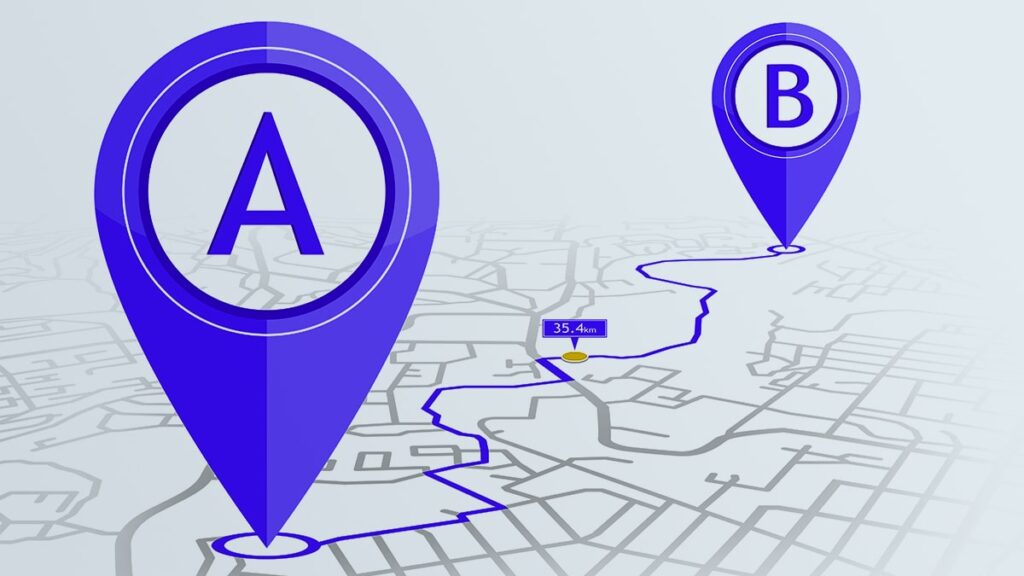Whenever we share an address, including the PIN code is obvious, as it ensures the accuracy of the address. Over time, the PIN code has seamlessly become synonymous with the address, evolving into an integral component of our daily interactions.
Although it may go unnoticed due to its commonality, the PIN code plays a crucial role for numerous businesses and logistics companies, facilitating the smooth operation of their services.
Whether it is in the realm of insurance companies or logistics firms, the PIN code is indispensable. It serves as a linchpin, ensuring these entities can efficiently manage their business operations.
In essence, the PIN code has transitioned from a mere postal identifier to a cornerstone of operational efficiency, quietly underpinning the seamless functioning of diverse industries.
In this article, we will discuss what is PIN Code, the History of PIN Code, PIN Code structure and Post office zones, and much more.

Table of Contents
What is a PIN Code?
PIN Code, Short for Postal Index Number is a numerical code that uniquely identifies a specific postal region. the PIN code system was designed to enhance the efficiency of the postal system by uniquely identifying specific geographic regions.
The PIN code typically consists of six digits and is hierarchical, with each digit representing a specific level of geographic detail, ranging from broader regions to more localized delivery zones.
History of PIN Code
PIN Code dates back to August 15, 1972, introduced by the then Additional Secretary in the Union Ministry of Communications, Shriram Bhikaji Velankar. The idea was to optimize the country’s postal system, facilitating quicker and more accurate mail delivery across the vast expanse of the country.
The importance of the PIN code system lies in its ability to simplify the sorting and routing of mail within the extensive network of post offices.
Over time, this system was adopted by various businesses and logistical companies to enhance their network of business operations helping them reach to wide geography of individuals.
PIN Code Structure & Post Office Zones
The following are the PIN Code Structure and Post Office Zones-
| 1st digit of PIN | Zone | States or Union Territories |
| 1 | North | National Capital Territory of Delhi |
| State of Haryana | ||
| State of Himachal Pradesh | ||
| State of Punjab | ||
| Union Territory of Chandigarh | ||
| Union Territory of Jammu and Kashmir | ||
| Union Territory of Ladakh | ||
| 2 | State of Uttarakhand | |
| State of Uttar Pradesh | ||
| 3 | West | State of Gujarat |
| State of Rajasthan | ||
| Union Territory of Dadra and Nagar Haveli and Daman and Diu | ||
| 4 | State of Chhattisgarh | |
| State of Goa | ||
| State of Madhya Pradesh | ||
| State of Maharashtra | ||
| 5 | South | State of Andhra Pradesh |
| State of Karnataka | ||
| State of Telangana | ||
| 6 | State of Kerala | |
| State of Tamil Nadu | ||
| Union Territory of Puducherry | ||
| Union Territory of Lakshadweep | ||
| 7 | East | State of Arunachal Pradesh |
| State of Assam | ||
| State of Manipur | ||
| State of Meghalaya | ||
| State of Mizoram | ||
| State of Nagaland | ||
| State of Odisha | ||
| State of Sikkim | ||
| State of Tripura | ||
| State of West Bengal | ||
| Union Territory of Andaman and Nicobar Islands | ||
| 8 | State of Bihar | |
| State of Jharkhand | ||
| 9 | APS | Army Postal Service (APS) |
| Field Post Office (FPO) |
State-Wise PIN code
The following are the state-wise PIN Code-
| The first Two Digits of PIN | Circle |
| 11 | Delhi |
| 12, 13 | Haryana |
| 14 – 16 | Punjab |
| 17 | Himachal Pradesh |
| 18 – 19 | Jammu & Kashmir |
| 20 – 28 | Uttaranchal, Uttar Pradesh |
| 30 – 34 | Rajasthan |
| 36 – 39 | Gujarat |
| 40 -44 | Maharashtra |
| 45 – 49 | Chhattisgarh, Madhya Pradesh |
| 50 – 53 | Telangana, Andhra Pradesh |
| 56 – 59 | Karnataka |
| 60 – 64 | Tamil Nadu |
| 67 – 69 | Kerala |
| 70 -74 | West Bengal |
| 75 – 77 | Orissa |
| 78 | Assam |
| 79 | North Eastern |
| 80 – 85 | Jharkhand, Bihar |
| 90 – 99 | Army Postal Service (APS) |
FAQ
PIN Code stands for Postal Index Number Code.
A standard PIN code in India consists of six digits.
Each digit in a PIN code has specific geographic significance, indicating broader regions to more localized delivery zones. For instance, 11 is designated to Delhi which is the national capital region
The PIN code system was introduced in India on August 15, 1972.
While the term “PIN code” specifically refers to the Indian postal code system, similar postal code systems with different names are used globally for mail sorting and delivery.
I’m Shiv Kumar, a graduate with a passion for finance, marketing, and technology. My journey into finance started with a desire to understand money management and investing.
Our main goal is to empower individuals through financial education. We believe that everyone should have the opportunity to build a strong financial foundation. Whether you’re a seasoned investor or just getting started, we provide articles, guides, and resources to help you navigate the financial landscape.
I invite you to join our community of financially savvy individuals. Feel free to ask questions, engage with our content, and explore the topics that matter to you. Together, let’s take control of our financial futures.




